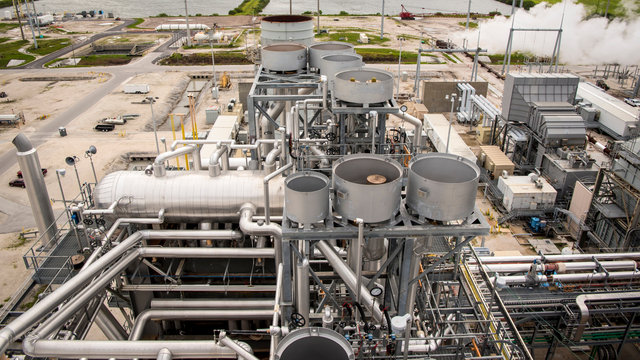
What Lies Beneath

How a Philippines Power Plant Overcame Difficult Soil Conditions
The first-ever coal dome in the Philippines is fast becoming an iconic structure. Pilots are rumored to use the large crystal building to guide their way into Francisco Bangoy International Airport in Davao. The fact that it is even standing tall, however, is due to the innovation by Black & Veatch during the construction of the facility — hard to appreciate from 10,000 feet.
Beyond the sparkle of the eye-catching dome, Therma South is indeed built on solid civil engineering and construction planning and execution. Located next to the sea, at the confluence of two rivers and in a seismic Zone 4, the soil is silty and vulnerable to erosion and other extreme environmental conditions.Our pre-construction planning, before we had even submitted our EPC (engineering, procurement, construction) bid to plant owner AboitizPower, was key to construction remaining on schedule, and it's what is often missing from other contractors when building power plants in Asia.
The more we investigated the soil, the more we learned. Discrepancies in the data using different tests just highlighted the complexity of the overall soil conditions.
Putting Construction Top-of-Mind
A constructability program was devised in the proposal stage to enhance the plant's design, tighten the delivery schedule and ensure everything was done with the construction process at top-of-mind.
Such advanced project management was needed. The artesian groundwater conditions made it very difficult to collect reliable soil information during subsurface investigation and geophysical testing. Electronic piezometers, seismic cone penetration tests, continuous flight auguring and multichannel analysis of surface waves were some of the techniques used to help gather valuable information. However, until the construction work actually began, the true extent of the groundwater was not fully understood.
Think of the site as a block of Swiss cheese. Every time we bore into the ground to install a foundation or pile, we received new information and used this to continually evolve our design. It was a very dynamic scenario that required constant diligence and re-evaluation. Then we encountered the limestone shelves.
Rethinking Piling Plans
Unexpected limestone layers were discovered at the site at various locations and depths. The weak soils beneath the limestone shelves meant that it was not possible to terminate the piling in the limestone itself. This new technical challenge threatened to increase the amount of time required to drive the piles and increased the risk of pile damage. To avoid the risk of delay and increasing costs, the team decided that the piles in the limestone layers would be pre-drilled through the limestone shelf to reach solid bedrock.The civil, structural and geotechnical engineering team also had to design the power plant for the highest possible earthquake loads. The combination of silty soil in an earthquake zone created a further challenge — liquefaction.
Modelling earthquake events in the prevailing site conditions showed that the soil could develop properties of a liquid and become unstable and unable to support the load of the structures. Such understanding only heightened the importance of piling activity as structures not supported by piles would be subject to massive settlements in such seismic incidents.Additional preventative measures were taken to counteract the liquefaction potential. This included the installation of stone columns as well as vibro compaction and soil densification through pile driving. Studies were also performed to understand the expected movements of flexible offshore water pipes, and design tolerances were adjusted to allow movement without damage.When earthquakes did strike the area during and after construction, the design coped, thereby preventing damage or structural failures.
Reliable Power Supply Helps Millions
Therma South Units 1 and 2 in the Philippines are now a fully operational circulating fluidized bed, coal-fired power plant. Officially opened by the country's president in January 2016, it is the first major power plant to come online in nearly 10 years in Mindanao, now serving an expanding economy and population in the region. The additional 300 megawatts of base load power added to the grid is expected to help alleviate the daily power cuts faced by millions of Filipinos and complement the seasonally affected hydropower facilities in the region.
Drawing on its long-established Asian-based execution and procurement centers, the Black & Veatch team provided balance-of-plant engineering and procurement services. Black & Veatch was also responsible for providing the EPC solution for material handling, plant-wide fire protection and offshore piping for cooling water, in addition to site management and commissioning services.
Subject Matter Expert
Todd Edsall: EdsallTL@bv.com
Contact Us
Looking for a partner in innovation?
Let's Talk

